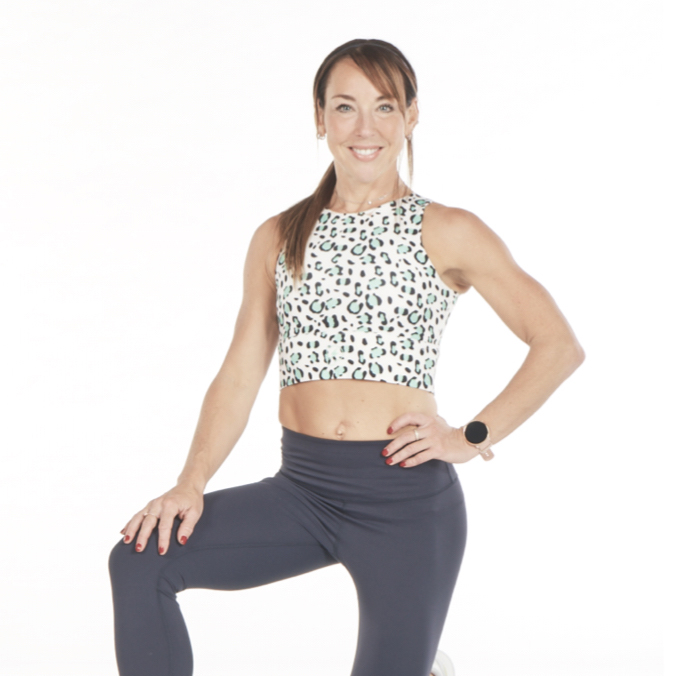I swapped my weekly run for Japan's viral walking technique – the results were surprising
Not a fan of running? Then walk.


In Japan, the key to longevity and health is as simple as putting one foot in front of the other – walking. The Japanese don’t walk to stay fit; walking is woven into their daily routines.
Research consistently shows that it’s one of the most underrated forms of exercise. It boosts cardiovascular fitness, aids in weight management, and lifts mood, so it’s easy to see why.
Whether you’re new to exercise or simply looking to switch up your cardio, walking trends are a great way to keep things interesting. The latest one making waves? The Japanese walking technique.
This interval-style method promises to enhance cardiovascular fitness, lower blood pressure, and build lower-body strength – and yes, it’s backed by science. All you need is a supportive pair of walking shoes (or running shoes or workout trainers) and a timer.
What is the Japanese walking technique?
Developed by researchers at Shinshu University in Japan, this method – known as Interval Walking Training – involves alternating between brisk and moderate-paced walking to improve cardiovascular health and overall fitness.
To practice it, start by walking briskly for three minutes at around 70–85% of your maximum heart rate, a pace where talking feels challenging but still possible.
After that, slow down for three minutes, allowing your heart rate to drop to 40–50% of your maximum. You continue alternating between these paces for a total of 30 minutes, repeating the cycle five times.
Get all the latest news, reviews, deals and buying guides on gorgeous tech, home and active products from the T3 experts
What are the benefits of the Japanese walking technique?
This method, backed by research led by Dr. Hiroshi Nose, compared interval walking with both continuous moderate walking and no walking at all. The interval walkers experienced the greatest improvements, boosting aerobic capacity, increasing muscular strength, and reducing resting blood pressure.
As the researchers noted: “High-intensity interval walking may protect against age-associated increases in blood pressure and decreases in thigh muscle strength and peak aerobic capacity.”
Other proven benefits include:
- Heart health: Fast walking elevates your heart rate and improves circulation, strengthening the heart over time.
- Weight management: Alternating between fast and slow intervals enhances metabolic rate and fat oxidation, all without the strain of continuous high-impact exercise.
- Blood sugar and blood pressure regulation: This method has been shown to reduce hypertension and improve glycaemic control.
- Stronger immunity: Improved muscle strength and metabolism contribute to overall better fitness, which can enhance your body’s ability to fight infections.
- Joint-friendly: The lower-impact nature of walking, combined with alternating paces, reduces joint strain and makes this suitable for all ages and fitness levels.

Who is the Japanese walking technique for?
This trend is accessible and research-backed, making it suitable for practically everyone. It’s low-impact, adaptable, and ideal for anyone looking to improve fitness without the wear and tear of more intense exercise. I’ve even recommended it to older clients who want to stay active but avoid running, and they’ve loved it. Naturally, I had to try it for myself.
Here’s what happened when I tried the Japanese walking technique
First, I calculated my maximum heart rate using the standard formula: 220 minus my age. Experts advise against exceeding this number.
Then I found my target heart rate zone (70–85% of max). My Garmin Lily 2 Active tracked this easily, but if you don’t have a tracker, aim for about a 7 or 8 out of 10 on the perceived exertion scale, where talking feels hard but not impossible.
I set my timer for 30 minutes and began with three minutes of low-intensity walking (40–50% of my max heart rate), followed by three minutes at a higher intensity (around 70–80%). I alternated these intervals until the 30 minutes were up.
Work smarter, not harder
Still chasing 10,000 steps? There’s a smarter way to walk. I genuinely enjoyed this challenge. I already love walking, but walking with purpose felt like a serious upgrade. It was effective without being exhausting, and I never felt bored or pressured.
Studies suggest interval walking can improve aerobic fitness by up to 20%, regulate blood sugar levels, and build leg strength, so I was all in. I loved pushing during the faster bursts, then recovering and refocusing. You get your heart rate up fast, making it perfect if you’re short on time.
I also became more mindful of my form, keeping my core engaged, torso upright, and arms moving with purpose. Knowing I only had to sustain each effort for three minutes helped me stay committed.
If you’re looking to upgrade your daily walks, boost fat burn, and enjoy a range of health benefits, give Interval Walking Training a try. I loved it. Now, all I need is a path lined with Japanese cherry blossoms, and maybe some sashimi as a post-workout treat.

Lucy Miller is a journalist, Level 3 Personal Trainer, Nutritional Advisor and Children’s Fitness Specialist. She holds fitness qualifications from NASM Training and Premier Training International and has been a fitness journalist and fitness (and cover) model for over 20 years. Since going freelance in 2014, Lucy left Men’s Fitness Magazine to write for an abundance of top consumer titles such as Women’s Health, Women’s Fitness, Waitrose, The Times, The Guardian and Runners World.
She’s also extremely passionate when it comes to educating others about health and physical activity and loves inspiring and working with children and adults to help make fitness fun, sustainable and accessible. In her spare time, Lucy is ever the sportswoman. Once a national gymnast, having won three national titles, she has also run a handful of marathons around the world and loves to test her physical and mental side with daily running and gym sessions, not to mention ballet, bootcamp, boxing and TRX.
You must confirm your public display name before commenting
Please logout and then login again, you will then be prompted to enter your display name.